Organizing production according to international standards is not only an inevitable step to bring local agricultural products further, but also a commitment to sustainable agriculture , linked to the global value chain.
Rich raw material area, large scale
Deputy Director of the Department of Agriculture and Environment Doan Ngoc Co said: Currently, the province is focusing on developing agricultural products with high economic value and high demand from the international market such as coffee, pepper, cashew, rubber, and tropical fruit trees such as banana, avocado, passion fruit, durian, etc.
In addition, the province also develops medicinal herbs such as red lingzhi mushroom, turmeric, lemongrass, ginger, etc., opening up new market segments. Up to now, about 50% of the crop area is produced according to international standards, affirming the mindset of shifting from mass production to sustainable production, associated with enterprises in the entire value chain.
“Notably, Gia Lai coffee is present in 60 countries; fresh fruit is exported mainly to Japan, Korea, and China; while processed fruit is aimed at the European market,” said Mr. Co.
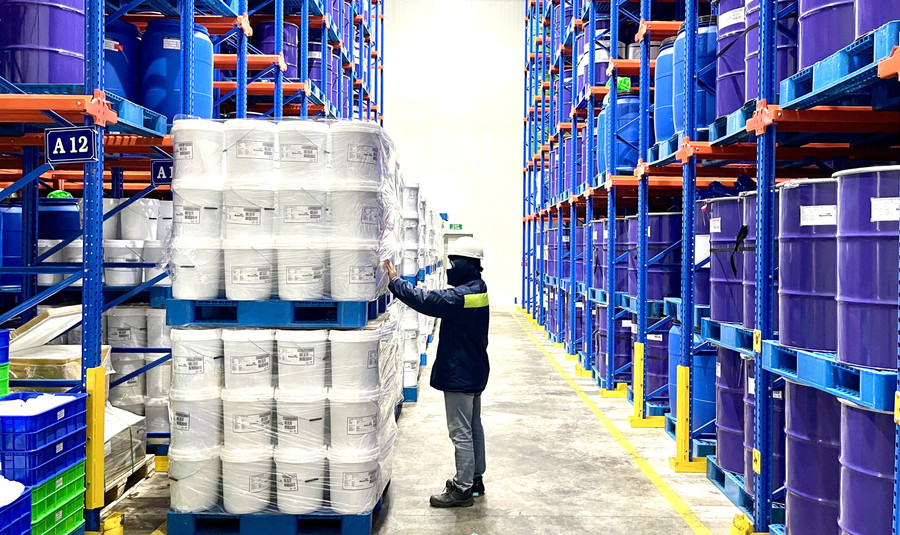
In addition, the province currently has 92 4-5 star OCOP products with export potential, focusing on agricultural products, vermicelli and food, handicrafts and medicinal herbs.
With 248 export growing area codes to China (10,095 hectares) and 40 packaging facilities with a capacity of 1,800 tons/day, Gia Lai has a good foundation to develop a sustainable agricultural value chain and increase export turnover.
In the province, a number of linkage chains have been formed in the production of coffee, passion fruit, durian, medicinal herbs, etc. These models help farmers optimize input costs, stabilize output, while ensuring consistent quality and increasing product value.
In particular, investment in infrastructure, technology and international standard processes has helped Gia Lai agricultural products conquer demanding markets such as the EU, Japan, Korea, etc.
Links create export advantages
Vinh Hiep Company Limited (An Phu ward) is a coffee production enterprise according to 4C standards, Rainforest Alliance, with an output of about 160 thousand tons/year.
Deputy Director of the Company Tran Thi Lan Anh said: “Vinh Hiep's success comes from the companionship of more than 10,000 farmers, cooperatives and cooperatives. We focus on technology transfer, digital transformation, and building a multi-layered value chain, not only improving product quality but also minimizing environmental impact, aiming for sustainable development”.
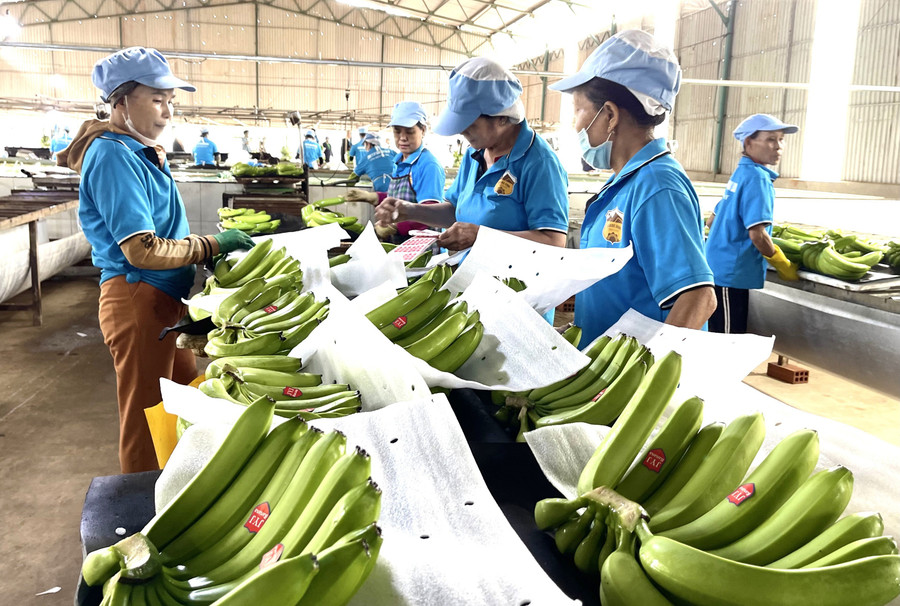
In addition to the approximately 240 thousand tons of coffee exported each year, in recent years, fresh and processed fruits (bananas, durians, passion fruit, mangoes, pineapples) have also emerged as potential export items. Some large corporations and enterprises such as Nafoods, Hoang Anh Gia Lai, Thaco Agri... have invested in developing large-scale raw material areas, creating an advanced farming trend, an important foundation for sustainable development.
With an average altitude of 700-800 m above sea level, the areas of Chu Se, Ia Bang, Kon Gang, Bau Can, Lo Pang communes... have ideal conditions for growing South American banana trees. Thanks to special soil conditions, bananas here have a rich flavor, beautiful appearance, meeting the requirements of the Japanese, Korean and Chinese markets. Currently, the province exports about 150 thousand tons of bananas each year.
Mr. Nguyen Ngoc Mai - Director of Gia Lai Livestock Joint Stock Company (Hoang Anh Gia Lai Group) said: The company currently owns 1,700 hectares of fruit trees, of which 1,380 hectares of South American bananas have achieved GlobalGAP certification. Every year, we export about 62,000 tons of fresh bananas to the Japanese, Korean, and Chinese markets.
Meanwhile, Mr. Le Hoang Linh - Director of the raw material area project (Ia Bang commune) of Hung Son High-tech Agriculture Joint Stock Company - said: "Through market research, it shows that the demand for banana consumption in some countries such as Singapore, Malaysia, the Middle East... is very large. This is the room for the company to research and expand the area to increase output, meeting the needs of partners."
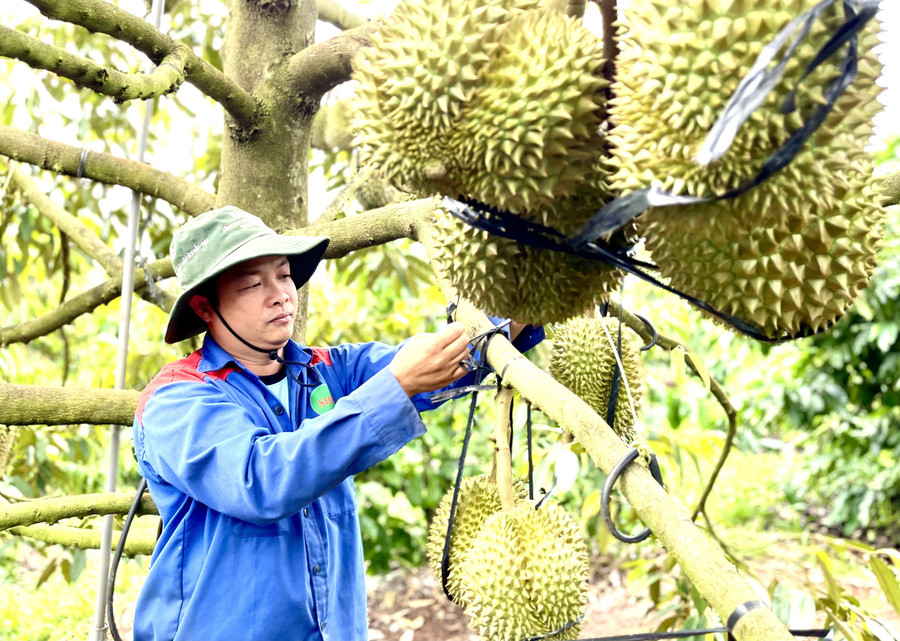
Along with bananas, durian also increased its acreage rapidly thanks to the participation of many large enterprises, applying modern processes, ensuring stable productivity and consistent quality.
Mr. Ho Dac Quang - Director of Thagrico Cao Nguyen Fruit Tree Company Limited (under Thaco Agri) said: "The company has nearly 1,000 hectares of durian in Ia Tor and Ia Púch communes. This year, the first 100 hectares enter the commercial period, with an output of about 1,000 tons. It is expected that by 2026, durian output will reach about 3,000 tons, by 2027 it will reach 5,000-6,000 tons, and by 2030 it will reach 10,000 tons. About 70% of the output will be exported, 30% will be consumed domestically."
Mr. Quang emphasized that in order for durian to conquer the international market, production must strictly comply with the standards set by customers, especially not leaving pesticide residues.
When farmers boldly apply international standards such as GlobalGAP, products can completely appear on shelves in many countries. In fact, in 2024, durian exports brought Vietnam a record 3.2 billion USD, showing the great potential of this fruit.
Source: https://baogialai.com.vn/dinh-hinh-vung-nong-san-chu-luc-cho-xuat-khau-post568249.html


![[Photo] Prime Minister Pham Minh Chinh chairs the 16th meeting of the National Steering Committee on combating illegal fishing.](https://vphoto.vietnam.vn/thumb/1200x675/vietnam/resource/IMAGE/2025/10/07/1759848378556_dsc-9253-jpg.webp)












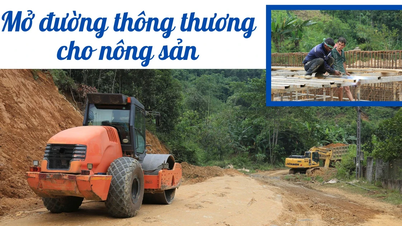

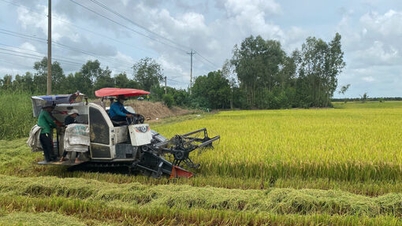










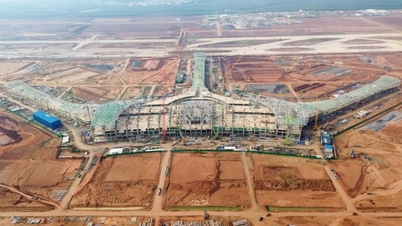












![[Photo] Super harvest moon shines brightly on Mid-Autumn Festival night around the world](https://vphoto.vietnam.vn/thumb/1200x675/vietnam/resource/IMAGE/2025/10/07/1759816565798_1759814567021-jpg.webp)














































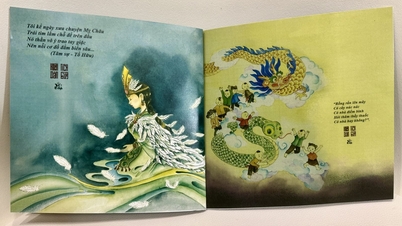




















Comment (0)